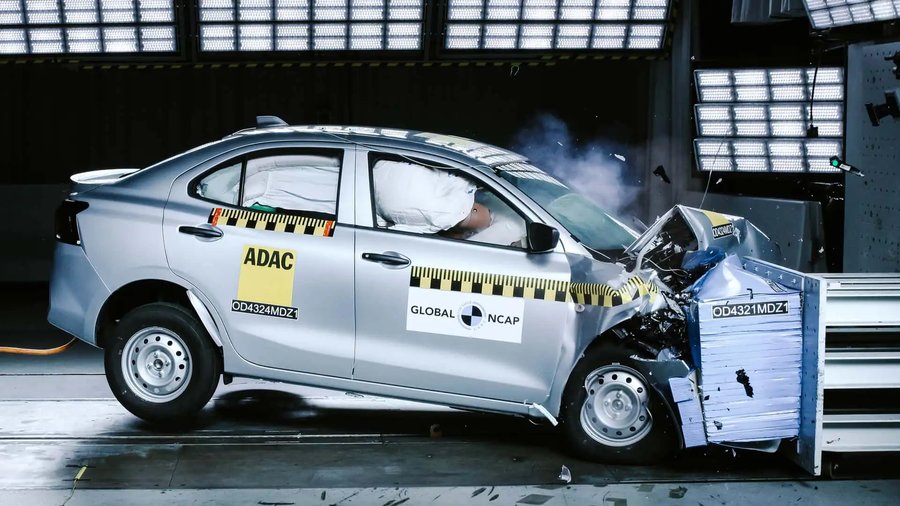India is one of the last bastions of cheap cars. Econoboxes are still prevalent in the world’s most populous country where Skoda recently launched a $9,300 crossover with ventilated seats. The traditional sedan segment is well-covered as well, and Maruti Suzuki just launched the fourth-generation Dzire (no, that’s not a typo). It stars at the equivalent of $8,000 or roughly six times less than the average new car sold in the United States.
When automakers are developing ultra-cheap cars, they must cut corners to bring the costs down. Automakers typically skimp on safety features, resulting in shockingly poor crash test results for cars typically sold in emerging markets. Case in point, the Suzuki Baleno hatchback got zero stars in a Latin NCAP evaluation back in 2021. The smaller Swift hatch only got one star in a Global NCAP test a year later. Now, Maruti Suzuki proves it doesn't necessarily have to be this way as its new Dzire got a full five-star rating.
Maruti Suzuki was confident its diminutive sedan would ace the crash test because it voluntarily gave Global NCAP cars to destroy. Even the standard Dzire has six airbags, ESP, hill hold assist, and pedestrian protection. Sure, these are features many of us take for granted in 2024 but you can imagine sacrifices have to be made for sub-$10,000 cars. America's cheapest car, the Nissan Versa, starts at $18,330, more than double the price of a base Dzire. Even in its highest trim level, the Dzire costs only about $12,000.
This is an honest-to-God family sedan that offers basic transportation without being a deathtrap, even by 2024 crash test standards. It won’t set your heart on fire with its naturally aspirated 1.2-liter gas engine making just 80 hp and 83 lb-ft or an even lower 69 hp and 75 lb-ft if you opt for the model running on compressed natural gas (CNG). Output is channeled to the front axle via a five-speed manual or an automated manual with the same number of gears.
The no-nonsense Dzire is only 157.2 inches long, 68.3 inches wide, and 60 inches tall, with a 96.4-inch wheelbase and 14-inch steelies wrapped in 165/80 R14 tires for the base model. Fancier versions get 15-inch alloys. The lightest version tips the scales at merely 2,028 pounds. The trunk has a cargo volume of 13.5 cubic feet, which isn't that bad given how small the car is.
More expensive trim levels get niceties such as a 360-degree camera, automatic climate control, rear air vents, a wireless charger, a two-tone cabin, and even an electric sunroof. Maruti Suzuki also throws in LED headlights, a trunk lid spoiler, and a tire pressure monitoring system. The 9-inch touchscreen supports wireless Android Auto and Apple CarPlay, so it's safe to say this isn't a barebones car.
The Dzire has been a huge commercial success in India, racking up more than 2.7 million sales since it was launched in March 2008. The newest iteration will also be offered in Africa, the Middle East, Latin America, and the ASEAN region.
Related News



